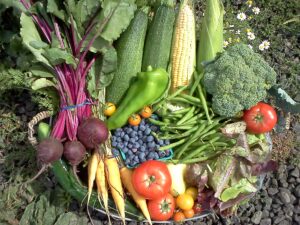Best Wasp Trap: Keeping Wasps at Bay in Your Garden
Introduction
Wasps, while beneficial to the ecosystem, can become a nuisance when they invade your garden space. Their presence not only disrupts outdoor activities but also poses a risk of painful stings, especially for those allergic to their venom. Fortunately, with the right tools and strategies, you can effectively control and manage wasp populations in your garden. One of the most practical solutions is using a wasp trap, designed to attract and capture these pests while keeping your outdoor area safe and enjoyable. In this comprehensive guide, we’ll explore the best wasp traps available, along with tips on how to use them effectively to keep wasps at bay and maintain a peaceful garden environment.
Wasp Trap Types
When it comes to selecting the best wasp trap for your garden, it’s essential to consider the different types available and their features. Here are some common types of wasp traps:
Hanging Wasp Traps: These traps typically feature a reservoir for attractant liquid and a funnel-shaped entrance that allows wasps to enter but makes it challenging for them to escape. Hanging traps can be suspended from tree branches, pergolas, or other structures in your garden.
Bottom-Entry Wasp Traps: Bottom-entry traps lure wasps into a container through a small opening at the bottom. Once inside, the wasps become trapped and are unable to find their way out. These traps are often placed on flat surfaces or hung from hooks.
Disposable Wasp Traps: Disposable traps come pre-baited with attractants and are designed for single-use. They offer a convenient solution for quickly reducing wasp populations without the need for refills or maintenance.
Each type of wasp trap has its advantages and may be suitable for different garden setups and preferences. Consider factors such as trap placement, ease of use, and attractant effectiveness when choosing the right one for your needs.


Tips for Using Wasp Traps Effectively
-
Proper Placement: Strategically place your wasp traps in areas where wasps are commonly seen, such as near flowering plants, outdoor dining areas, or garbage bins. Hang traps at least 20 feet away from high-traffic areas to avoid attracting more wasps to your living spaces.
-
Attractant Selection: Choose attractants that are appealing to wasps, such as sweet-smelling liquids or protein-based baits. Common attractants include sugar water, fruit juice, or meat scraps. Experiment with different attractants to determine which ones are most effective in attracting wasps in your area.
-
Regular Maintenance: Monitor your traps regularly and empty them as needed to prevent them from becoming overcrowded with captured wasps. Refill the attractant solution or replace disposable traps according to the manufacturer’s instructions to maintain their effectiveness.
-
Safe Handling: When handling wasp traps, take precautions to avoid accidental stings. Wear protective clothing, such as gloves and long sleeves, and approach traps with caution. Follow proper disposal procedures for disposable traps to minimize contact with captured wasps.
Conclusion
Investing in the best wasp trap for your garden can help you effectively manage and control pesky wasp populations, creating a safer and more enjoyable outdoor environment for you and your family. By understanding the different types of traps available and implementing proper placement and maintenance techniques, you can significantly reduce the presence of wasps and minimize the risk of stings. Remember to prioritize safety when handling traps and always follow manufacturer instructions for optimal trap performance. With the right approach, you can keep wasps at bay and reclaim your garden space for relaxation and enjoyment.





















































